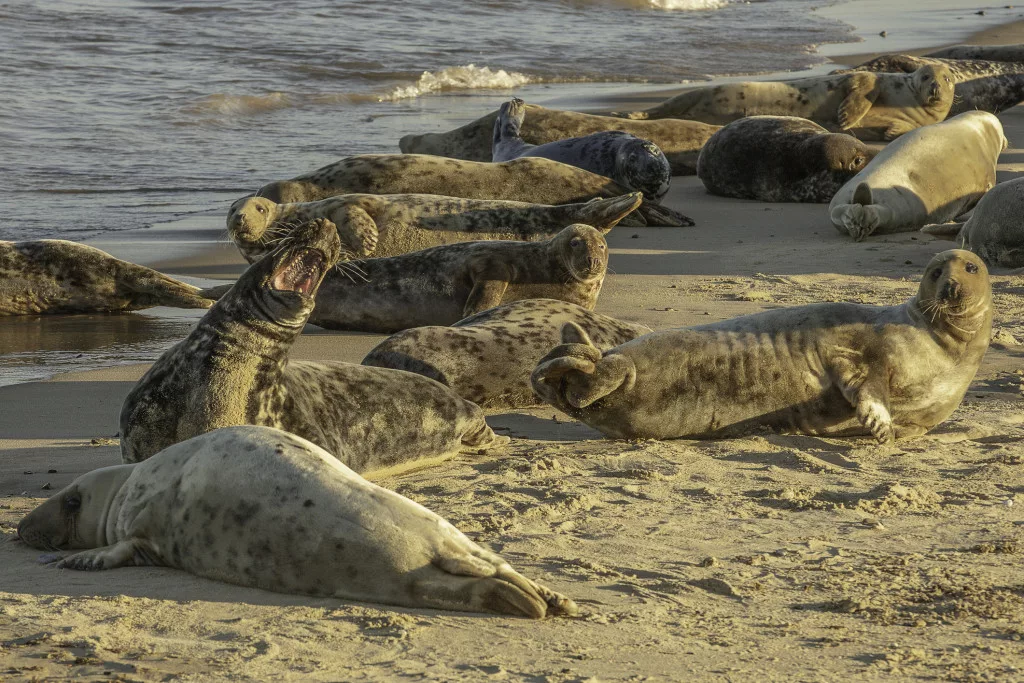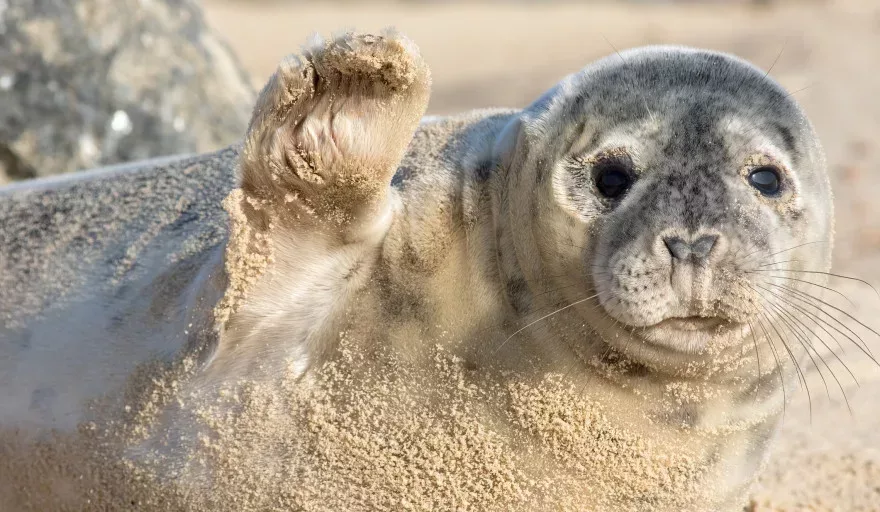HORSEY BEACH, NORFOLK
This year has not been one for travelling. Aside from a short trip to Snowdonia I’ve spent most of the year working from home in Norwich, spying on my neighbours out of the study window. One began keeping chickens in his small back garden. Another started (and quickly stopped) renovating his garden, watched by a scruffy one-eyed cat.
But Norfolk has something much more enticing to offer in the way of wildlife watching – the UK’s largest colony of grey seals.
Every winter, thousands of grey seals swim up onto the beaches of Horsey and Winterton, on Norfolk’s east coast. November to January is pupping season – the seals come onshore to give birth, and once the pups are strong enough they swim back out to sea.
I’ve gone to see the seals every year I’ve lived in Norfolk. But this year it feels much more exciting, presumably because I hadn’t left the city in weeks.
We park at Horsey windpump, a red brick drainage windmill perched on the edge of Horsey Mere, one of Norfolk’s broads (wetlands). But we walk in the opposite direction, across the fields and towards the coast.
The skies feel vast in this part of the world, because it’s so flat. Suspended above us are great grey banks of cloud, parting every now and then to reveal a pale shaft of winter sunlight.
Amid the rough, yellow grass we find parasol mushrooms, named after their umbrella-shaped appearance. They are one of the tastiest species growing wild in England – we pick specimens with tawny caps larger than our heads and shove them into a rucksack, much to the interest of passersby.
From there, it’s just a few metres to the beach. We scramble up the sandy path towards Horsey Gap, an opening in the high sand dunes that border the beach.
The beaches in Norfolk go on for miles. This isn’t a county of pretty coves and aquamarine waters. The slate grey waters of the North Sea crash against the flat stretch of sand we’re standing on, which stretches out to the horizon. I pull my scarf over my chin to protect it from the arctic bite of the wind. A storm breaks out at sea, and rolls slowly towards us.
When the season begins in earnest, the Friends of Horsey Seals rope off the beach, and ensure visitors view the colony from the dunes above. But we’ve arrived early, before the beaches are crowded with expectant mothers and their newborn pups. To our left is a cluster of people with camera phones. We turn right.
The seals are located just behind a row of rocks. I smell them before I see them – a pungent scent of ammonia and salt and decomposing fish. It’s a wild, raw smell, and one that will only intensify as the season draws on. We hear their calls on the wind; high ululations known as ‘barks’.
On this stretch of sand there are two hundred seals or more, sprawled across the sand like giant slugs. Some of them are gargantuan, their fur dark and scarred with many seasons spent here, on this cold beach, fighting for space. And there are pups, too, with fluffy white fur and round dark eyes. We keep our distance; they look at us curiously.
Some of the older seals are used to the cameras. Some – at risk of anthropomorphising – even seem to enjoy it. They curl their bodies into C-shapes, and move their flippers up and down (‘they’re waving at us,’ we say hopefully).
Others ignore our presence. They’re too busy fighting each other, or hefting their bulk down to the ocean and into the sea to go fishing. In the water, they’re transformed, lithe bodies arcing through the water with a grace they simply don’t possess on land.
Eventually we get too cold and turn away. We’ll go back to the car and get warm. But the seals will stay where they are, lashed by the rain and the wind and the snow, until their pups have been delivered.





















